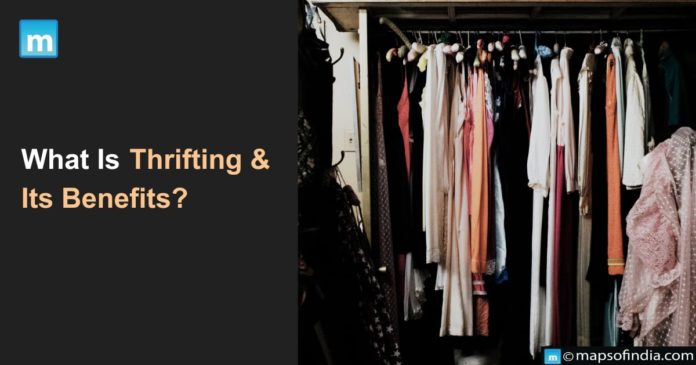“The Earth has enough resources to meet the needs of all but not enough to satisfy the greed of even one person.” The above sentence by the father of our nation stands true to its core now more than ever. Fast fashion brands and skyscraping price tags aren’t everyone’s cup of tea. Not all of us can waltz into branded showrooms or shops and come out with a handful of stuffed carry bags. But we should not be sidelined from availing mainstream fashion or access to items. To our relief, thrifting makes it possible for the general mass to afford the luxury.
Thrifting is buying secondhand clothes or any other object, things that have been used before but are sold away by the initial consumer for whatever reason. The trend of thrifting is also a product of awakened vigilance among people toward the environment. Prolonging a product’s usage and cycle to use it profusely instead of buying new things is a step towards sustainable living of utilizing the resources to their full potential. The benefits of thrift shopping are tremendous on a personal scale for the overall sustenance of the environment. From saving money and cultivating a unique style to reducing waste and promoting sustainability, thrifting offers many advantages beyond mere material possessions.
Benefits Of Thrifting
-
Affordability
Thrifting is an excellent way to save money while enjoying various high-quality items. Secondhand stores, online platforms, and vintage shops offer clothing, furniture, electronics, and more at significantly lower prices than their brand-new counterparts. By embracing thrifting, individuals can stretch their budget further, affording more items or investing the saved money elsewhere.
-
Unique Style
One of the most exciting aspects of thrifting is the opportunity to develop a unique sense of style. Unlike mainstream fashion, which tends to follow trends, thrift stores provide a treasure trove of diverse and one-of-a-kind pieces. Thrifting allows individuals to express their individuality and creativity by curating an eclectic wardrobe or decorating their living space with distinct vintage finds.
-
Environmental Impact
Thrifting is a sustainable alternative to traditional shopping, as it significantly reduces the demand for new products and minimizes waste. By purchasing secondhand items, we divert usable goods from landfills, extending their lifespan and reducing the need for resource-intensive manufacturing processes. Additionally, thrifting decreases the carbon footprint associated with producing, transporting, and disposing of new goods, contributing to a greener planet.
-
Recycling and Upcycling
Thrifting promotes the concept of recycling and upcycling. Rather than discarding unwanted items, individuals can donate them to thrift stores, allowing others to give them a new life. Moreover, thrifting encourages creativity and DIY projects. By repurposing or upcycling thrift items, such as transforming an old shirt into a trendy tote bag or restoring a vintage chair, we reduce waste and foster a culture of sustainable craftsmanship.
-
Supporting local Communities
When we choose to thrift, we actively contribute to the local economy. Thrift stores often operate as nonprofits or small businesses, and our purchases help support their initiatives, create jobs, and strengthen the community. Moreover, many thrift stores partner with charitable organizations, using their proceeds to fund social causes and support those in need.
-
Discovering Hidden Gems
Thrifting is an adventure in itself. Exploring thrift stores allows us to stumble upon hidden gems that carry stories and history. Vintage clothing, antique furniture, retro electronics—these items possess character and charm that mass-produced products often lack. Finding these unique treasures can bring a sense of excitement and satisfaction that goes beyond the act of purchasing.
Thrifting holds countless benefits for both individuals and the planet. By embracing secondhand shopping, we can save money, develop a distinctive style, and contribute to sustainable practices. Through recycling, upcycling, and supporting local communities, thrifting enables us to be more conscious consumers and reduce our environmental impact. So, the next time you search for a new outfit or home decor, consider the thrifty way. By choosing thrift stores and embracing the power of secondhand, you can unlock a world of possibilities while making a positive difference for yourself and the planet.




